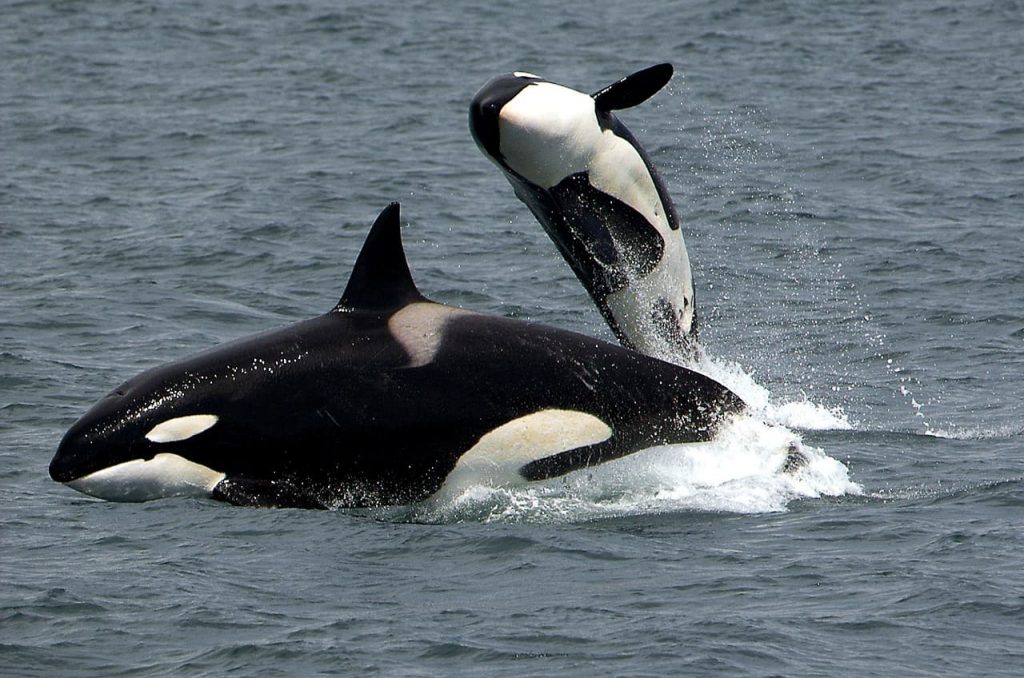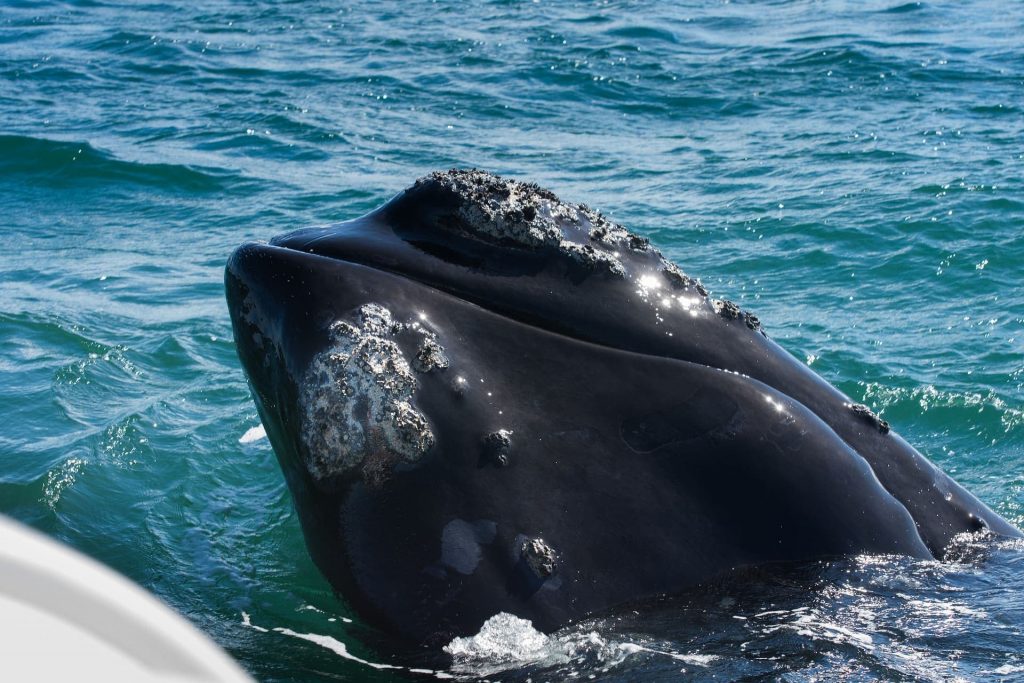Whale watching is a natural hobby to enjoy while voyaging on an Antarctic cruise. Antarctica boasts some of the best locations for seeing these impressive whale species. What is a whale? What are the different types of whales? How do whales sleep? What is the biggest whale? Is there such a thing as a “school” of whales?
In our whale guide, you will find whale facts, whale names, whale species, learn more about endangered whales, beached whales, whale size (including the smallest whale and the biggest whale), learn history about the whale hunting industry, what whales eat, the behavior of a group of whales, and learn which whales are “toothed whales.” We hope you find it useful in planning your Antarctic cruise!
It isn’t the size that distinguishes what constitutes a whale. In fact, the word “whale” isn’t even a scientific term! The word can be traced to an ancient European language meaning “big fish.” However, they are mammals like us, not fish. The scientific word used for whales is cetaceans (See-TAY-shuns). There are two orders of cetacean and membership depends on what the species of whale eats. The suborder called Mysticetes (MISS-tuh-SEE-tees) is for filter feeders who have baleen instead of teeth. Usually, they eat foods like krill, squid, and small crustaceans.
Antarctic species belonging to this suborder include the Blue, Fin, Humpback, Minke, Southern Right, and Sei. Of all the species who can call Antarctica home, only Killers (Orca) and Sperm whales are not mysticetes. They belong instead to the suborder called Odontoceti (Oh-DON-tuh-SEH-tee) and they are classified as such because they do not have baleen. Instead, they have teeth. Odontoceti includes porpoises and dolphins. All whales are warm-blooded, give birth to live young, have young that drink milk, and require air for respiration (they don’t have gills).

Antarctic and sub-Antarctic waters host at least eight different species. They are the Blue, Fin, Humpback, Minke, Killer, Sei, Southern Right, and Sperm.
Blues – specifically Antarctic Blue Whales – are the biggest animals that have ever lived on our planet. Check out our Blue Whale page to learn more.
Whales can be smaller than most people think. There are 86 species of true whale. The smallest is the Dwarf Sperm at approximately nine feet long when fully grown and weighing 400-600 lbs. Dwarf Sperms are not found in the cold waters of the Southern Ocean surrounding Antarctica.
Baleens (suborder Mysticetes) eat zooplankton (animal plankton), small fish, copepods (a type of small crustacean), krill (a small shrimp-like crustacean), squid, small crustaceans, and small fish. In general, they eat small prey and take huge gulps of water to capture this prey. Their baleen acts as a filter by keeping the small prey trapped and pushing out the consumed ocean water. Antarctic whales of this type include the Blue, Fin, Humpback, Minke, Southern Right, and Sei.
There are two species of Antarctic whales that do not belong to suborder Mysticetes. They belong to the toothed suborder (Odontoceti). All toothed suborders use echolocation in locating prey. In other words, they send sounds and can locate and identify prey based on their ability to analyze the sounds that bounce back. The two toothed species indigenous to the Antarctic waters are the Killer Whale (Orca) and the Sperm Whale.
Orcas can have extremely varied diets that consist of fish, squid, sea lions, seals, walruses, sharks, and even other whales that may be considerably larger than a single Orca. They hunt in packs and are known as the wolves of the sea.
Sperm Whales can dive up to 3,000 feet to get prey. They tend to feed on octopus, large squid, and some types of fish.
They can either rest quietly while in a horizontal or vertical position, or they can sleep while swimming slowly next to another whale. This places them into a state that is similar to napping.
Young whales can do everything – including resting and sleeping – while simply gliding next to their mother. Since they do not have much body fat yet, they could sink if their mother doesn’t keep moving next to them. The mother’s continuous movement creates its own current known as a slipstream, which keeps the calf from sinking. Mother whales usually will not stop swimming for the first few weeks of a newborn’s life.
It is believed that their blowholes are controlled by the conscious part of their brain. This is perhaps one reason why whales do not fully sleep in the same sort of deep sleep that humans and many other land mammals utilize for recharging.

Calves – just like baby cows! A single baby is called a calf. Female adults are called cows and male adult whales are called bulls, just like cattle.
Ready to find your dream cruise? Have questions? Contact Polar Holidays to schedule a free consultation with one of our booking specialists today!